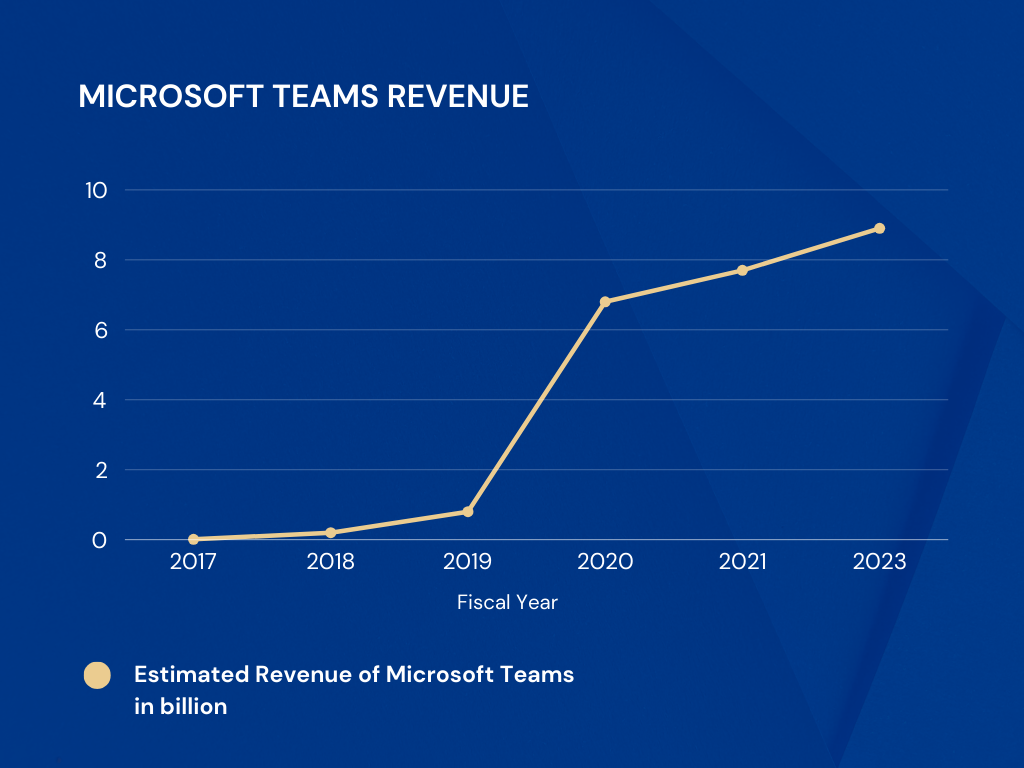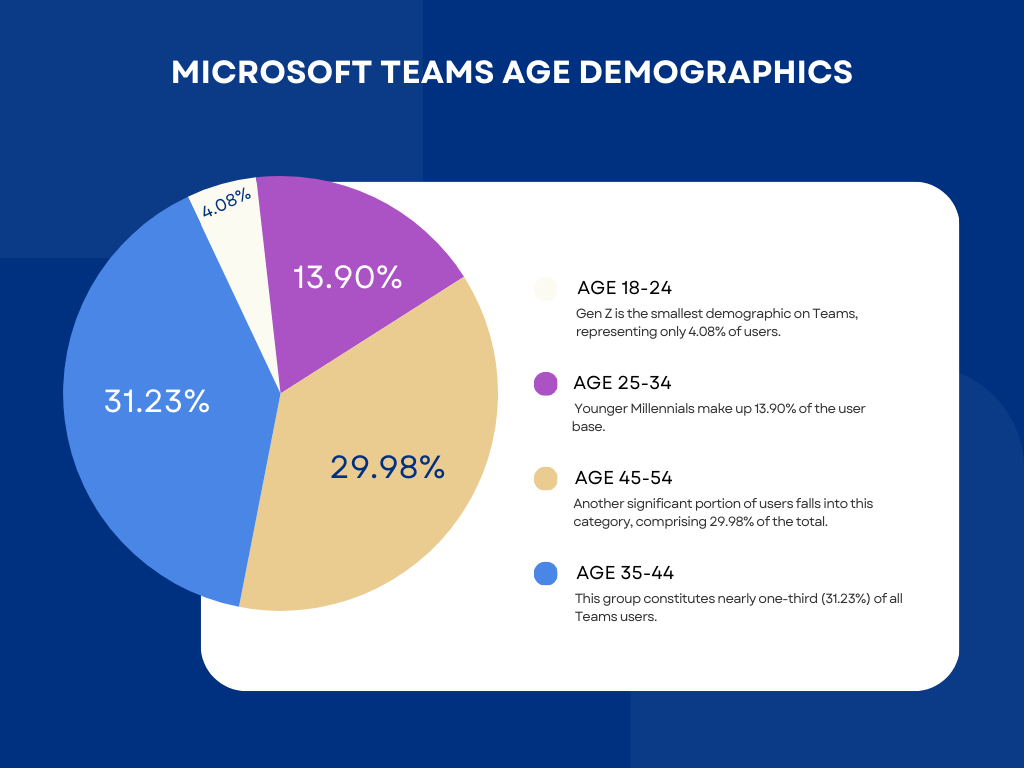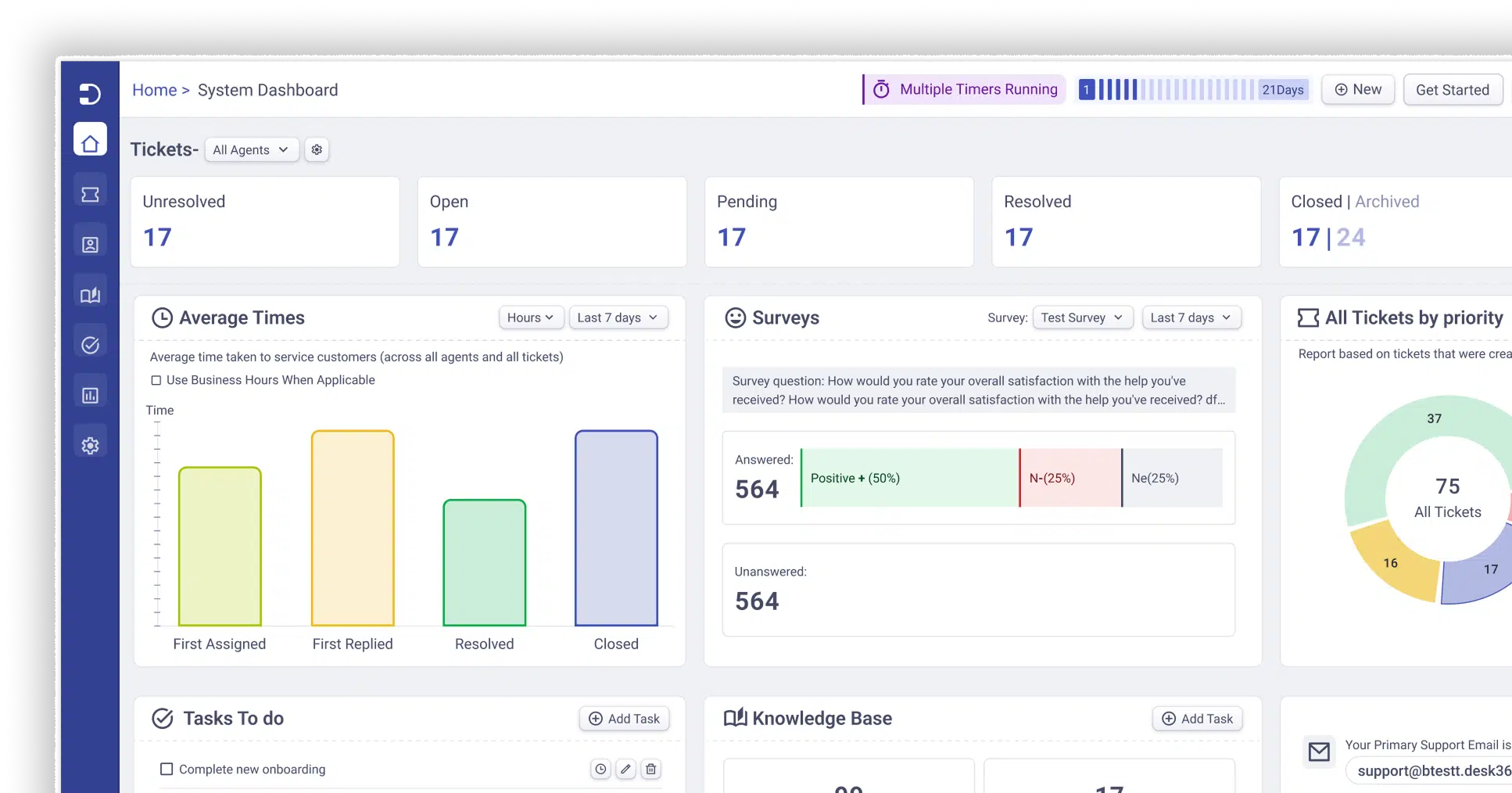As businesses transitioned to remote work during the COVID-19 pandemic, Microsoft Teams emerged as an indispensable tool for maintaining communication and collaboration across global workforces.
Now, in 2025, Teams continues to be a staple in the corporate world, easily adapting to both in-office and remote work setups. With its user base exceeding 320 million worldwide, Microsoft Teams exemplifies how technology can foster connectivity in diverse working environments.
This article will present the latest statistics on Microsoft Teams, illustrating its pivotal role in evolving business communication strategies
Microsoft Overview
- As of June 2024, Microsoft has over 250,000 employees worldwide.
- Microsoft has a market capitalization of over $2.5 trillion as of July 2024, making it one of the largest companies in the world.
- Headquarters: Redmond, Washington
- Revenue: $225 Billion (2024)
General Microsoft Teams Statistics 2025
Microsoft Teams reached 320 million monthly active users in early 2024, highlighting its significant growth and user engagement across diverse sectors.
The platform saw a major use in the educational sector, accessed by users from over 400,000 educational institutions.
Microsoft Teams users have generated over 5 billion meeting minutes in a single day, reflecting high levels of collaboration and interaction.
Microsoft Teams has shown a substantial increase in file sharing, with a 76% increase reported, highlighting the platform’s utility in collaborative tasks.
Daily active users on mobile reached over 75 million, indicating the platform’s strong mobile presence.
Growth in specific functionalities like Microsoft Teams Rooms and Teams Phone users reached significant milestones with 1 million Teams Rooms and 20 million Teams Phone users.
The average number of daily active users on Teams has seen consistent growth, surpassing 145 million in 2024, reflecting the platform’s increasing utility in daily communications and collaborations.
The platform has recorded over 330 billion meeting minutes daily, demonstrating massive global engagement and reliance on Teams for corporate communications.
Microsoft Teams now supports more than 1,400 third-party apps, facilitating extensive customization and integration capabilities for users across various industries.
Usage by educational institutions continues to expand, with Teams being used in more than 400,000 schools and universities worldwide, facilitating remote learning and campus collaboration.
Teams have supported over 200 million meeting participants daily, indicating their critical role in hosting large-scale virtual events and meetings.
Microsoft Teams market penetration in the collaborative software market has increased, although it trails behind Microsoft SharePoint and Slack in terms of overall market share.
Microsoft Teams has experienced a significant increase in usage on Fridays, suggesting a trend where Teams becomes crucial for wrapping up weekly tasks and planning for the upcoming week.
Source – Microsoft, Worldmetrics, Earthweb, Gitnux
Monthly active users in Microsoft Teams
Microsoft Teams reached 320 million monthly active users in early 2024. This number underscores the platform’s significant growth and strong user engagement across various sectors over the past five years. Here is the progression of Microsoft Teams’ monthly active users over that period:
This steady increase highlights how Microsoft Teams has become an essential tool for collaboration and communication, adapting to the needs of diverse workplaces and industries.
Source – Microsoft
Companies Using Microsoft Teams by Country
Teams’ global presence is marked by over 8 million companies using it in the USA, followed by 1.9 million in the UK and 855,000 in Canada.
Here are the app’s user demographics by country, in terms of the number of companies that use it.
- United States - 8.0 million companies
- United Kingdom - 1.9 million companies
- Canada - 855,000 companies
- Germany - 285,000 companies
- Australia - 269,000 companies
- India - 146,000 companies
- France- 132,000 companies
Source: Earthweb
Teams Usage in Different Companies
The platform supports a diverse range of company sizes with 21% small businesses, 47% medium-sized businesses, and 32% large enterprises utilizing Microsoft Teams.
Small Businesses
21% of its users come from small businesses, indicating its accessibility and utility in managing smaller teams.
Medium-sized Businesses
47% usage suggests that it’s a favored tool for mid-sized companies, likely due to its scalability and integration capabilities.
Large Enterprises
32% of the user base is from large enterprises, showcasing its robustness and ability to handle complex organizational needs.
Source: Usesignhouse
Microsoft Teams Usage
Teams are extensively used by large companies, with over 93% of the largest 100 US companies utilizing the platform.
Microsoft Teams is a cornerstone tool for many of the largest U.S. companies, with over 93% of the Fortune 100 companies incorporating it into their operations. These include giants across various sectors such as technology, finance, and healthcare, such as Apple, JPMorgan Chase, and UnitedHealth Group. This widespread adoption underscores Teams’ robust functionality and its ability to meet diverse enterprise communication needs.
Historical Meeting Minutes Data:
The platform has recorded over 330 billion meeting minutes in a single day, demonstrating massive global engagement and reliance on Teams for corporate communications.
Over the past five years, the usage of Microsoft Teams has seen exponential growth in terms of meeting minutes:
This trend highlights not only the increasing reliance on Microsoft Teams for corporate communications but also its scalability and effectiveness in supporting large-scale, global communications.
Source – Gitnux
Microsoft Teams Revenue

Source – Usesignhouse
Microsoft Teams Age Demographics
Microsoft Teams is particularly popular among older Millennials and Gen X, with the highest concentration of users in the 35-44 age group.

Key Takeaways:
- Teams has strong appeal among older age groups, likely due to factors like established careers, greater need for collaboration tools, and familiarity with Microsoft products.
- While younger generations may prefer other platforms like Slack or Zoom, Teams still has a significant user base among younger Millennials.
Source – Usesignhouse
Demographic profile of Microsoft Teams users
The demographic profile shows that most Microsoft Teams users are males, accounting for 72.86% of the user base, while females make up 27.14%.
Microsoft Teams has a predominantly male user base.
Microsoft Teams vs Slack
Parameters
Monthly Active Revenue
Revenue
Microsoft Teams
320 billion
Over $8 billion
Slack
54.1 million
$273.4 million
Source – Sci-tech today








